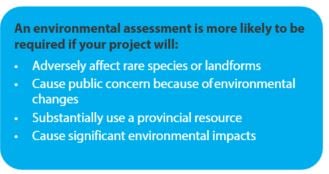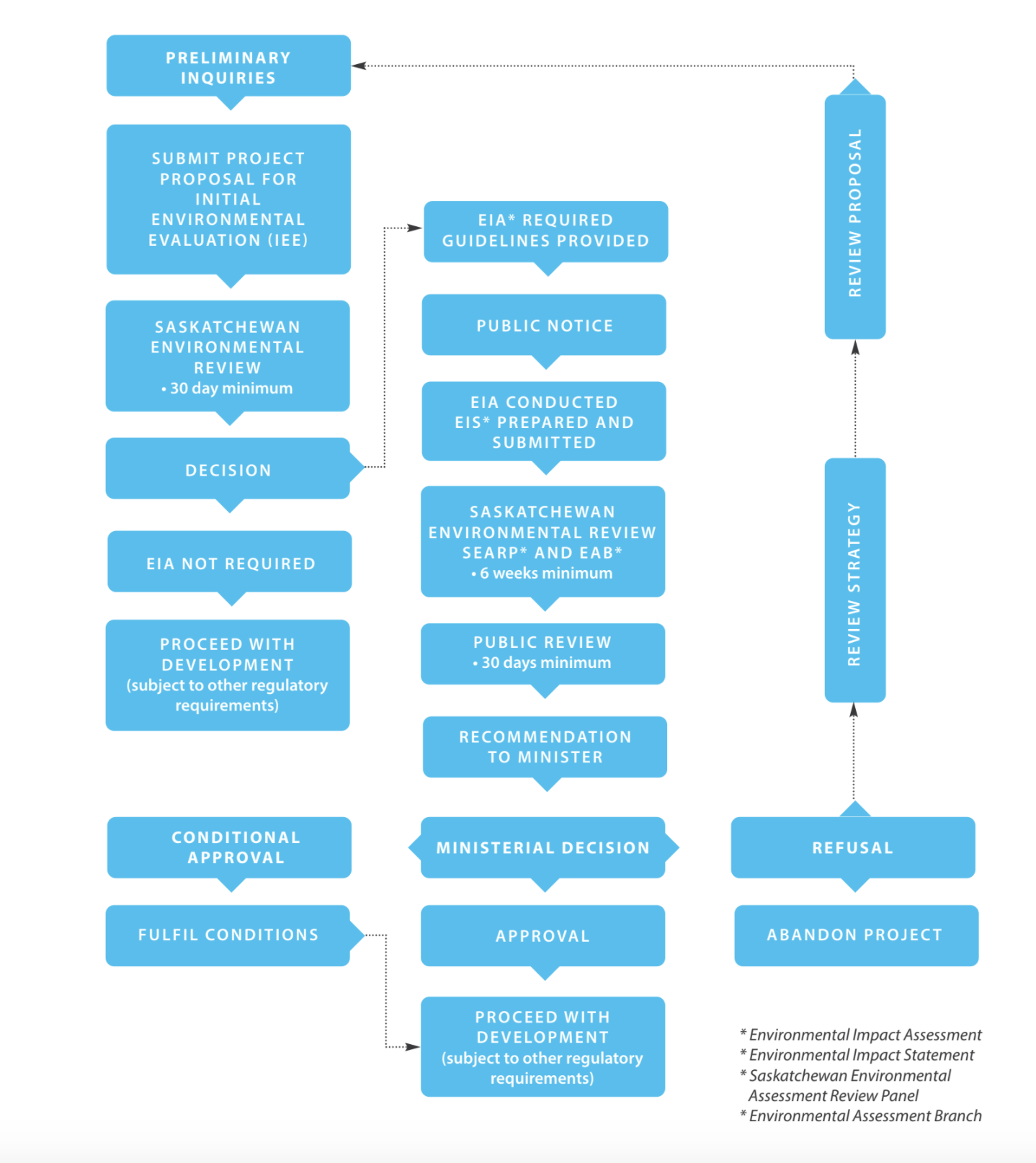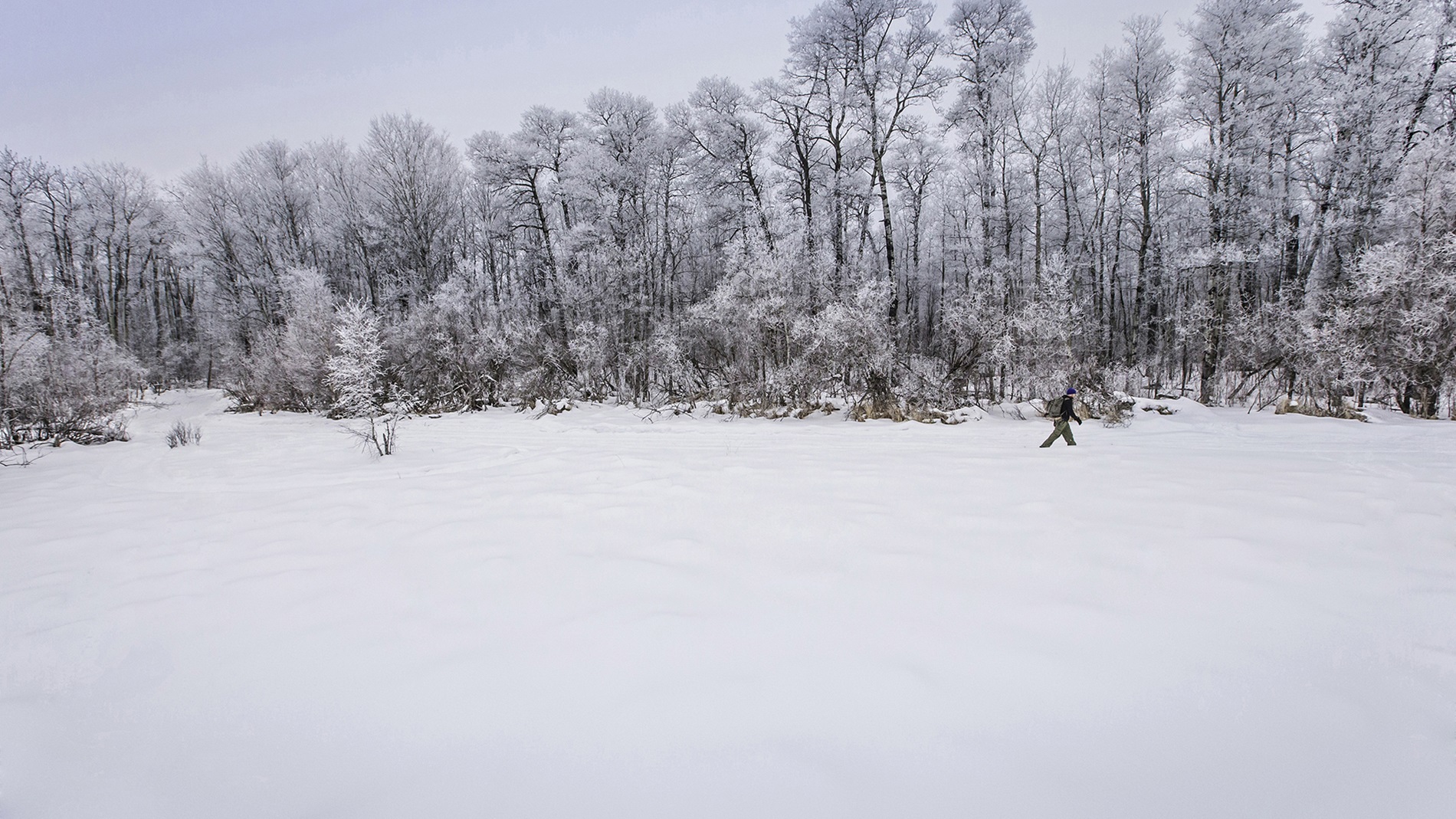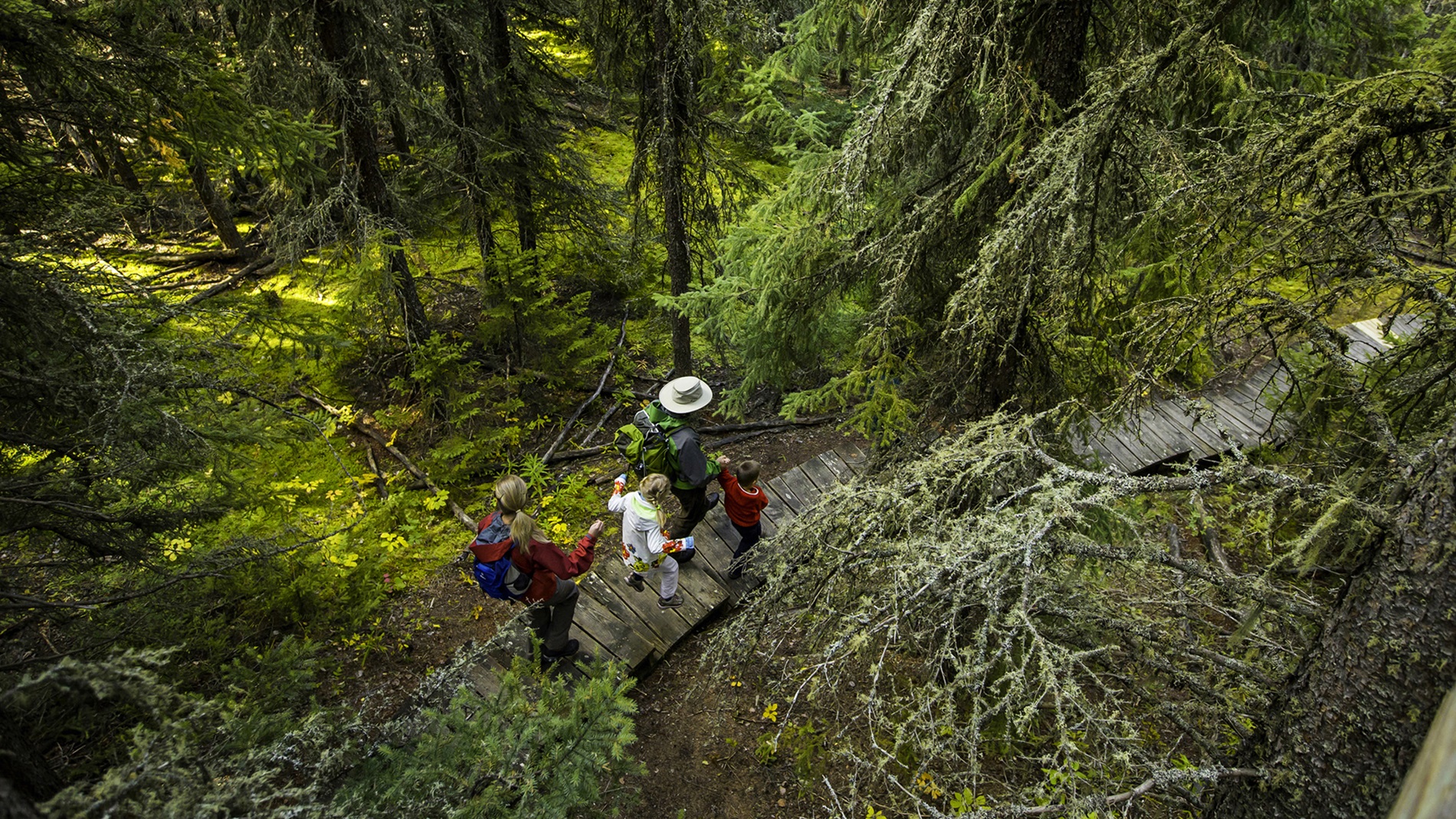Tourism developments often require access to and the use of natural resources. In some instances, tourism activities may have an impact on other natural resource users. Heritage and archaeological resources may also be affected in the development process. Taking these into consideration involves working with the officials and/or area residents responsible for several processes.
Environmental Impact
An Environmental Impact Assessment (EIA) program has been established to protect and conserve Saskatchewan's environmental resources. The program involves the review and evaluation of all development proposals for potential environmental concerns. Where such concerns are present, you may be required to conduct an EIA by preparing an Environmental Impact Statement (EIS).
 In order to determine whether or not an EIA is required, you should submit certain basic information to the Environmental Assessment Branch of the Ministry of Environment for an Initial Environmental Evaluation (IEE). Such evaluations are reviewed by the Saskatchewan Environmental Assessment Review Panel (SEARP) and the Canadian Environmental Assessment Agency. The project information could well be in the same document used to support applications to other agencies and should be
submitted early in the process. Generally, it takes between 30-45 days to review an IEE if all of the required information is in order.
In order to determine whether or not an EIA is required, you should submit certain basic information to the Environmental Assessment Branch of the Ministry of Environment for an Initial Environmental Evaluation (IEE). Such evaluations are reviewed by the Saskatchewan Environmental Assessment Review Panel (SEARP) and the Canadian Environmental Assessment Agency. The project information could well be in the same document used to support applications to other agencies and should be
submitted early in the process. Generally, it takes between 30-45 days to review an IEE if all of the required information is in order.
Following a review of the project proposal, you will be advised whether or not to prepare an EIS. If an EIS is requested, guidelines for its preparation will be provided.
The time frame for the preparation and approval of the EIS can vary depending on the amount of additional information required. It may take as little as four months, if the proposal is well-prepared. A longer period may be required if significant issues must be resolved.
The final decision, made by the Ministry of Environment, determines whether the proposal is environmentally acceptable, conditionally acceptable or not acceptable at all.
As with many other aspects of the development process, the prospects of successfully dealing with this step will be increased if you supply as much information possible at the outset. Early contact with the Environmental Assessment Branch of the Ministry of Environment is recommended.
Fisheries Resources
Managers of Saskatchewan's fisheries are responsible for the conservation and maintenance of our fish populations. For tourism operations that rely on fishing, an assessment of the productivity of a particular lake can be made by the Fisheries Branch of the Ministry of Environment. This assessment includes both the natural productivity of the lake and the needs of other users. The Fisheries Branch will advise on the appropriate size of lodge or camp that can be accommodated on the lake. This will protect the interests of all users of the resource.
Canada's Fisheries Act has a mandate to protect fish habitat. Under this Act, a Shoreline Alteration Permit is required for developments such as beaches, docks or marinas. This permit is available from the local Ministry of Environment field office. It may involve some conditions regarding the location, type or level of development, should the proposal potentially affect fish habitat. Approval is required from the Ministry of Environment and Fisheries and Oceans Canada. The processing time will be a minimum of one week.
Flood Hazard
Developments proposed in high flood-risk areas may have difficulty in receiving approvals, due to the risk of property damage and the threat to public safety. Developments proposed in areas of lower flood risk could require flood-proofing by diking or landfill, which would increase development costs. If there is any question about being located in a flood-hazard area, the Water Security Agency should be contacted at an early stage.
Environmental Impact Assessment (EIA)

Reservoir Development Areas
These areas have been established to manage shore land use and development around a number of Saskatchewan's reservoirs. Land-use zones have been created around these reservoirs. If rezoning is required, cabinet approval must be sought. The process may take up to six months.
Once satisfactory zoning is in place, a Development Permit must be obtained. This may take a minimum of six weeks and will be granted if the municipality and other government departments and agencies are in agreement with the proposal. This permit is in addition to any permits required under municipal zoning bylaws. The Water Security Agency administers the Reservoir Development Areas (RDA).
Heritage Resource Impact Assessment (HRIA)
If your development could potentially affect heritage resources, you will need to submit to an initial Heritage Resource Review (HRR) by the Heritage Conservation Branch of the Ministry of Parks, Culture and Sport. The results of the HRR will be used to determine if a broader Heritage Resource Impact Assessment is required. A Developers' Online Screening Tool is available, which has compiled heritage sensitive quarter-sections into a searchable database.
Environmental Assessment and Resource Links:
- The Ministry of Environment can provide information on the environmental assessment process, lakeshore development and fisheries.
- Consult the Water Security Agency for information on water management issues and regulations.
- Learn more about Heritage Resource Reviews and Heritage Resource Impact Assessments from the Ministry of Parks, Culture and Sport.




















